Flowing shower: problems and solutions
In this article we have to disassemble the typical problems that may arise during the operation of the shower - shower, faucet, hose and watering can. Of course, in each case we will try to find ways to eliminate the problem. So let's get started.

Scroll
To begin, let's try to list possible faults.
- The leak of a shower stall over the joints with the walls is manifested only if a sufficiently strong jet of water hits the corner.
- The cabin can also flow on the border of the doors or walls and the pallet.
- Release and siphon under it can also create problems.
- Mixer leakage can be the result of a fairly large list of various faults.
To clarify: water can flow not only into the pan or onto the floor due to a leakage of some kind of joint or seal. Not less often, water flows simultaneously from the shower and tap due to a breaker switch to the shower.
- Shower hose - not too durable design; Often after a couple of years of operation, water begins to flow not only from the watering can, but also from the slots of armor.
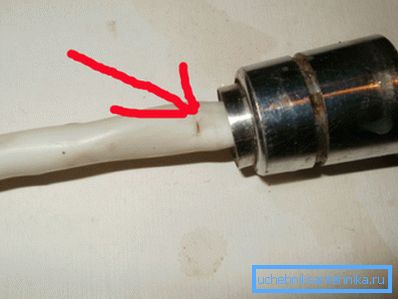
- Finally, watering holes are often clogged with sediment and overgrown with lime deposits. Strictly speaking, the problem has nothing to do with problems, but it also needs to be solved.
Causes and solutions
Leaks cabins
What should I do if the shower is flowing - through the connections of the pallet and the walls or the junction of the walls of the booth with the main wall?
The reason is obvious - loose connection of adjacent surfaces. The solution is no less obvious: the lumen is filled with sanitary silicone sealant for a shower cabin. Better - transparent: it does not darken over time, unlike white.

Nuance: the cavity of the seams must first be cleaned of lime and dirt. This is easy to do by filling out with Domestic or other alkali-based gel; then the residues are washed out with a stream of water, and the groove is dried for at least a day.
Sewer drain
Here is a list of typical drainage problems from the shower stall and how to solve them.
| Malfunction | Cause | Decision |
| Discharge from release | Offset release; laying under it is loosely clamped | After loosening the lattice retaining screw, center the release, gasket and tighten the screw again |
| Leak through one of the prefabricated connections. | The thread is broken; burst tight cap nut | Siphon changes completely. The price of the product assembly starts from 150 rubles; Search for individual parts does not justify itself |
| Leaking at the junction with sewer pipe | Lost elasticity ring seal in the socket | Replace seal; as an option, the compound after thorough cleaning and drying can be sealed with a sealant |
Mixer Leaks
Suppose that water is poured on the floor or in the shower stall through a mixer in the bathroom. Who is to blame and what to do?
For a start, it is worth localizing the leak.
Here are the possible options:
- Leaking on the crankshaft rod with an open tap. The reason - wear gland or rubber seal. The rubber ring changes to a new one; gland is stuffed again.
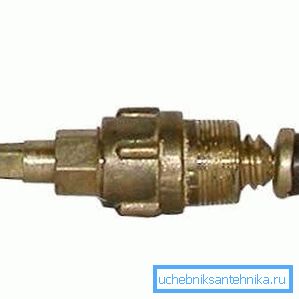
Useful: use only graphite stuffing box. Oily very quickly produced in hot water.
- Leak on the switch stem. Both the reason and the decision are completely identical to the previous case.
- Leak from the huss nut (spout). The reason is again the wear of the ring gasket. It is treated by its replacement.
Tip: gasket kits are easy to find at any plumbing store.
- Leakage from under the cam nut (scythe). When the water is blocked, both nuts turn away, after which they change to new seals under them.

Another possible option is to flow from a huss or shower with closed taps. The list of possible causes is quite varied: as a rule, in the case of screw cranes, it is enough to replace the gaskets, but ceramic ones need to be completely replaced.
A special case: if the screw crankbook is turned, this indicates a thread torn off on the rod or in the case. Of course, in this case only the replacement of the axle box will help.
Finally, often water flows from the shower and from the tap, regardless of the position of the switch.
- With pushbutton switches, a partially destroyed valve usually becomes the cause of the problem. Either the valve with the stem, or the switch completely change to analog.

- The lever switches with a barrel leak are usually caused by wear of the barrel with gaskets or its guides. Alas, guides are an integral part of the housing; in this case, it requires replacement. A characteristic sign of such a breakdown is a limited course of the lever.
- Ball switches practically do not fail in a natural way; if the lever was tried to turn when ceramic plates jammed with dross or sand, the cartridge needs to be replaced. To access it, simply unscrew the locking knob of the screw, remove it and unscrew the nut hiding the cartridge.
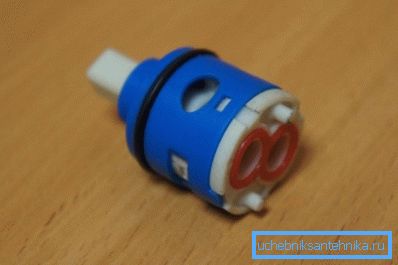
Shower hose leaking
Why is the shower hose flowing? This is due to the fact that its rubber core, hidden under the armor, has lost its elasticity and become brittle, which sooner or later inevitably leads to cracks and tears.
The manual troubleshooting instructions are quite obvious in this case:
- We get a new core.
- Turn off the two nuts of the hose.
- Poddev knife, take out one of the liners. After that, the core can be removed from the armor.
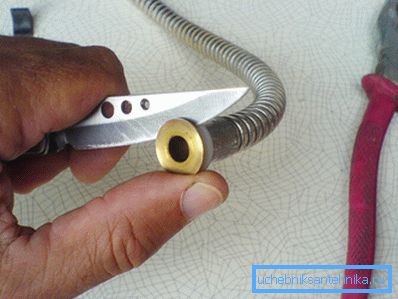
- We take out the second liner and stretch a new rubber tube on it.
- Pull it through the armor and insert the first liner.
- We press both inserts into the armor.
- Installing the gasket under the cap nuts, put the hose in place.
Watering holes
They can be cleaned by shaking the removed watering can; when overgrowing holes with lime, the watering can is to be soaked for half an hour in a pot with Belize or Domestos water solution prepared in a 1: 1 ratio.
In addition, the holes can be cleaned with a bent paper clip or a needle. If for the convenience of the procedure it is desirable to disassemble the watering can, in order to access the fastening screw of the screw, it is often necessary to first remove the plastic cap masking it in the center of the grid.
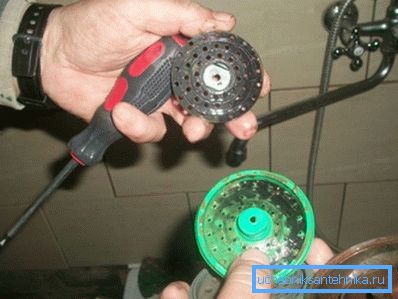
More rarely, watering cans with a mode switch are disassembled in an alternative way: when the switch is fixed with a hand, the net is simply unscrewed counter-clockwise.
Conclusion
Our mini-review of typical faults is somewhat superficial; However, it covers most of the problems that people who are far from plumbing can face in everyday life. The video in this article, as usual, will please the reader with additional materials. Successes!